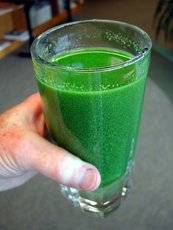Microcystis
Articles that lack this notice, including many Eduzendium ones, welcome your collaboration! |
 | ||||||||||||||
| Scientific classification | ||||||||||||||
| ||||||||||||||
| Binomial name | ||||||||||||||
| Microcystis Aeruginosa |
What is Microcystis?
Microcystis Aeruginosa is a type of harmful blue-green algae which is also referred to as cyanobacteria. They say that the walls of the bacteria are stained gram positive but the cells appear gram negative. This species is colonial, which means that single cells can join together in groups as colonies which tend to float near the water surface. Colony sizes will vary from a few to hundreds of cells. It is a common bloom-forming algae found primarily in nutrient enriched fresh waters and lower salinity estuaries. Microcystis aeruginosa is one of more than 700 species of algae that may be found in water samples collected and usually blooms in mid to late summer.
Genomic Structure
The colony is held together by mucilage and consists of thousands of individual cells, which are about 2-3 µm in size.
Appearance
Microcystis becomes very noticeable during bloom events. Thick mats of the algae can coat the water so heavily that you cannot see your hand an inch below the surface. In calm, fresh water areas, it may look like someone spilled green paint on the surface. On closer inspection, the mats can be seen to be comprised of small flakes or balls. If the algae is blown by the wind or pushed by currents into higher salinity waters where it cannot survive, it generally takes on a greenish-yellow color and a chunky appearance as it dies.
Causes of Blooming
Microcystis blooms are more frequently associated with warm, fresh, nutrient enriched water. Blooms generally occur in mid to late summer and can carry on into the fall. Excess nutrients (particularly phosphate) that are added to the Bays by human activities may contribute to the frequency and intensity of blooms.
History
Annual late summer blooms of Microcystis are frequently observed in the tidal freshwater portions of the Potomac River. During the 1970’s and early 1980’s, this area of the Potomac River experienced large blooms. Since the early 1980’s blooms have occurred to varying degrees in both the Potomac and Upper Bay. Larger than normal blooms occurred in the upper Chesapeake Bay and it’s tributaries during August and September 2000.

